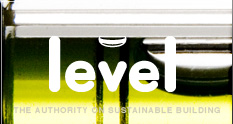- Home
- Site Analysis
- Site Use
- Passive Design
- Water
- Material Use
- Energy
- Wet Areas
- Health and Safety
- Other Resources
Passive Design
Designing the building and the spaces within it to benefit from natural light, ventilation and even temperatures.
Insulation
Specifying high levels of insulation for the thermal envelope is at the heart of good passive design.
Insulation acts as a barrier to heat flow, reducing heat loss in winter to keep the house warm or reducing heat gain in summer to keep the house cool. Inadequate insulation and air leakage are the main causes of heat loss in homes.
The most economical time to install insulation is during construction. Retrospective installation may be more difficult and costly. However, there are options for improving insulation in existing homes.
Insulation is needed in the ceiling, walls and floor. The key choices to be made are:
- the insulation format (blanket, rigid or loose fill) and material (for example, glass-fibre, wool, polyester) used in each part of the building, and
- the amount specified to achieve the desired R-value (that is, the desired level of thermal resistance).
The format and material specified will depend on client preference, the type of construction (for example, timber frame or concrete), and on which part of the building envelope is being insulated.
When specifying insulation materials, the key consideration is the thermal performance of the material over the life of the building. Also consider the sustainability of the insulation material – for example, the emissions associated with its manufacture. For details, see our insulation materials factsheet(PDF) and the materials section of this site. Some thermal insulation products have qualified for the Eco Choice Aotearoa label
Also see glazing and glazing performance for information about thermal insulation in windows and glazed doors.
It has been a requirement since 1 July 2016 for landlords to disclose in new tenancy agreements the extent of insulation in their rental properties.
Healthy homes standards
The healthy homes standards came into force for privately-owned rental properties and boarding houses on 1 July 2021. Owners of rental homes must ensure that their properties comply with HHS within 90 days of any tenancy that starts or is renewed after 1 July 2021. The rules apply to boarding houses immediately. All private rental homes must comply by 1 July 2025. (The Government extended the original date of 1 July 2024.)
All private rental properties must have thermal insulation installed in ceilings and under suspended floors where it is reasonably practicable to install it.
Curtains and blinds
Curtains and blinds can help keeping a home warm in winter. BRANZ, Beacon Pathway and the Home Performance Advisor Training Programme partnered with Sustainability Trust to find the warmest type of curtains. BRANZ used a test house on the BRANZ site and thermal imaging cameras to find differences in performance. The research confirmed that long curtains are better than short curtains, tight tracks are better than gappy tracks and thick linings stop heat loss better than thinner or no linings. A downloadable booklet has details, including options that households can use if this type of curtain cannot be immediately installed.
With blinds, other research indicates that honeycomb structure blinds with pockets of air trapped between the front and back faces are the best insulators.
Updated: 24 March 2024

